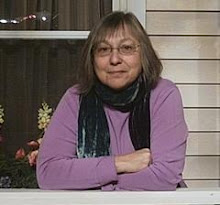 One of the first things you notice in DUMBO is the prevalence of old factory buildings designated as Gair Buildings. Robert Gair, a Scotsman, was at the commercial forefront as well as the waterfront. His innovations are very much a part of our lives today, in the design of our factory buildings and in our food packaging.
One of the first things you notice in DUMBO is the prevalence of old factory buildings designated as Gair Buildings. Robert Gair, a Scotsman, was at the commercial forefront as well as the waterfront. His innovations are very much a part of our lives today, in the design of our factory buildings and in our food packaging.Gair discovered a technique for mass producing printed cardboard boxes when his printing press accidentally cut through the cardboard and he realized that printing and cutting could both be done mechanically. He used this technique to create the showy cartons we see on the shelves of our supermarkets.

When he was building his third factory, on the Brooklyn waterfront in the 1890’s, Gair began to use a new building technique employing reinforced concrete. He was persuaded to do so by Dixon and Turner, the engineers and founders of Turner Construction Company, the pioneers of concrete construction and a corporation which, today, has annual revenues of over $4 billion. They convinced Gair that this new material would permit the installation of expansive windows, allowing more light and ventilation in the buildings.
Gair
 stated that he owed much of his success in life to what he learned as a soldier in the Civil War. He was a member of the 79th New York Highland Regiment, the first to answer Abraham Lincoln's call to defend the union. Gair admired Lincoln's clear vision and business acuity, particularly praising Lincoln's decision to place power in the hands of generals in the battlefield. Speaking of his war experience and insight, Gair said that he learned to "... never duck, stay with it until you are mustered out or you are knocked over.... You hear people talk about what a mule can endure. A man, with a head upon his shoulders, who can say no when tempted, can outwork and outlast a dozen mules if he takes no chances.” Robert Gair’s choices were imbued with his willingness to work and determination to endure.
stated that he owed much of his success in life to what he learned as a soldier in the Civil War. He was a member of the 79th New York Highland Regiment, the first to answer Abraham Lincoln's call to defend the union. Gair admired Lincoln's clear vision and business acuity, particularly praising Lincoln's decision to place power in the hands of generals in the battlefield. Speaking of his war experience and insight, Gair said that he learned to "... never duck, stay with it until you are mustered out or you are knocked over.... You hear people talk about what a mule can endure. A man, with a head upon his shoulders, who can say no when tempted, can outwork and outlast a dozen mules if he takes no chances.” Robert Gair’s choices were imbued with his willingness to work and determination to endure.
By the time Gair died in 1927 he had moved his factories to Piermont, and the 10 factory buildings connected by railroads and tunnels were being leased in the area then known as Gairville. The area became an exclusive hub of factory and other commercial interests, which declined in the 1930’s. The rebirth of the area began in the 1970’s when artists moved in. Subsequent conversions of many factories into condominiums gave both the area and the factory buildings a new life.

No comments:
Post a Comment